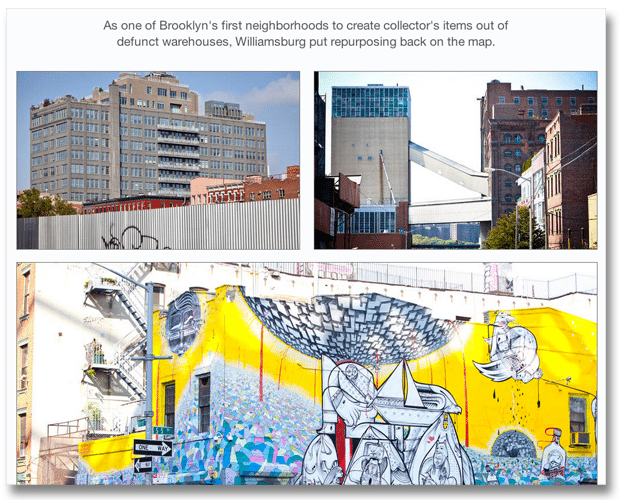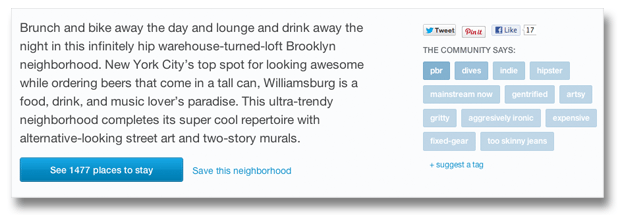From the price tag to the local take on tourism, what’s not to love about traveling with Airbnb? We covered their colorful (old) homepage in our best landing page designs series, but the San Francisco based company really outdid itself with the new Neighborhoods concept – a content marketing initiative that changes the travel planning process for the better. Let’s take a look at the new feature, and how your brand can learn from this stroke of content marketing genius.
Image-centric design
These days the web is all about imagery. Airbnb foregoes cookie cutter travel images for large, high quality photos, so that instead of the Statue of Liberty, visitors see the real stuff: unique images of roads less traveled.

How to incorporate this concept on your site: Even if your product or service is slightly less colorful than the neighborhoods of the world, there are opportunities to add interest using visuals. Whether it’s your office, your team or your own neighborhood, visitors often feel a connection to real (read: not stock) images.
Focus on user needs
Rather than skipping ahead to booking, Airbnb pauses to help users make the all-important decision on which neighborhoods to stay in. After all, if you’re unfamiliar with a city, neighborhood choice is a bit of a gamble, right? The new system classifies neighborhoods according to characteristics visitors might look for: “Artsy,” “Great Transit” and “Touristy” among many others, with an in depth description of each locale’s look and feel.

How to incorporate this concept on your site: What are visitors really going to look for when they get to your site? Rather than jumping right in to the product pitch, why not use quality content to answer burning questions on your industry, product or service? Being that needed source of information builds trust, making you a go-to resource in the future.
User contributions
At the end of each description, visitors are given the opportunity to contribute local knowledge, creating a sort of crowdfunded neighborhood knowledge bank. Letting real people contribute is bound to make the descriptions more accurate, and reassures visitors that they’re learning from the locals.

How to incorporate this concept on your site: Embrace two-way communication and let your visitors contribute. This can be as simple as a comments or questions section, or as complex as asking thought leaders to contribute to e-books, white papers and other content marketing materials.